Distinct, historic knife making regions across the globe have passed down long-established techniques that, even when combined with modern technology, still embody a style of craftsmanship that gives us a window into a specific place and time. One example: the millennia-old knife making customs across Asia. These regional traditions in knife craft have continuously inspired WÜSTHOF’s team of expert knife makers to explore the prevalent styles of Asian- and Western-style knives, creating innovative, premium hybrids that capture the best of both worlds.
A Brief History
What are the differences between these regional knife making styles?
Just as Solingen has been the cutlery capital of Western Europe since the Middle Ages, Asia also has its time-honored knife making lodestars. Yangjiang, a city in China’s southern Guangdong province, has been an epicenter of knife craft for over fifteen-hundred years. Civilian knife making began to take off around 550 A.D., when troops from the Imperial Chinese Army settled in the city. Local artisans evolved to master blacksmiths by forging high-quality, handmade swords that soon became renowned across China. As time passed and swords became unnecessary, these artisans, short of work, switched to crafting premium kitchen knives.
A similar trajectory happened in Seki, Japan, another epicenter of knife making mastery. Seki’s centuries of accumulated skill and knowledge are grounded by techniques that were originally developed for making samurai swords. During the Meji Restoration in the late 1800’s, an edict was passed that banned former samurais (known as shizoku) from carrying swords, declaring the act at odds with the era’s period of major modernization and Westernization. The Sword Abolishment Edict left sword-making artisans out of a job, inspiring many of them to begin forging knives meant for kitchen work: mincing, slicing, and chopping.
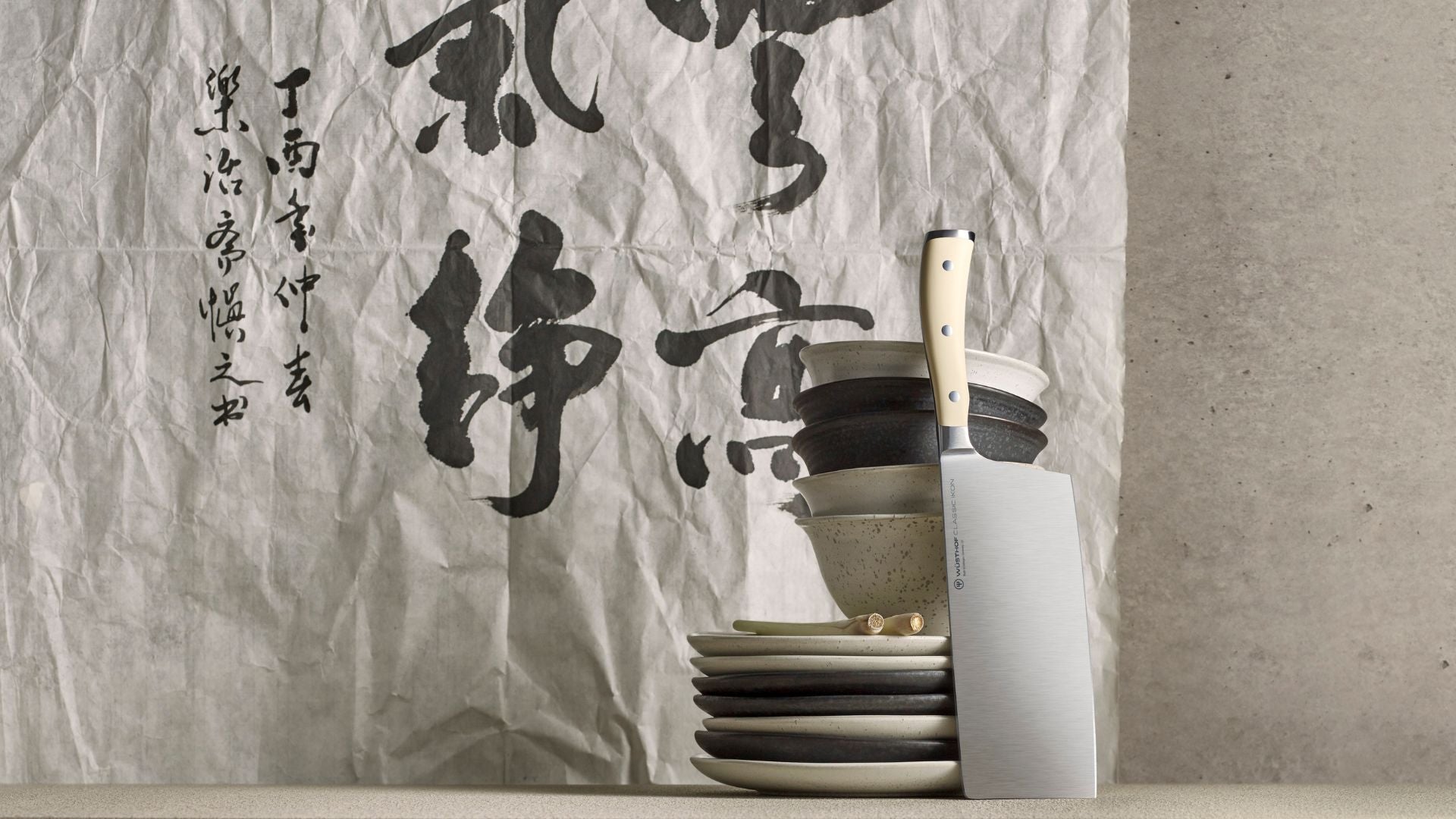

Classic Ikon 7" Chinese Chef's Knife
The difference between between Western and Asian-Style Knives
Traditional Asian-style knives, particularly Japanese-made knives, are mostly single beveled, meaning one side of the blade is straight while the other side is angled. Blades are thin, extremely sharp, and exceptionally hard, making these knives perfect for precision knife work and lighter, swifter handling. These traditional knives are also typically made from carbon steel, which is more prone to rust than stainless steel, and the hardness of the blades makes them prone to chipping or snapping if they aren’t handled correctly.
Knives that originated in Western Europe, particularly German-made knives, are often double beveled, meaning both sides of the blade are angled towards each other and come to a sharp point in the middle. These blades tend to be thicker and heavier than their Japanese-influenced counterparts and feature a distinct curvature that facilitates a steady rocking motion during chopping. Western-style knives are also made with a slightly softer steel, making them less brittle and more durable — these are the knives you would want for slicing through thick butternut squash, for instance.
Modern knife making often pulls from both Asian and Western European influences, fusing the best techniques and customs from both well-known cutlery regions to create exceptional hybrid-style blades. These knives, for instance, might showcase greater durability like a Western-style knife and premium, lightweight sharpness like an Asian-style knife.
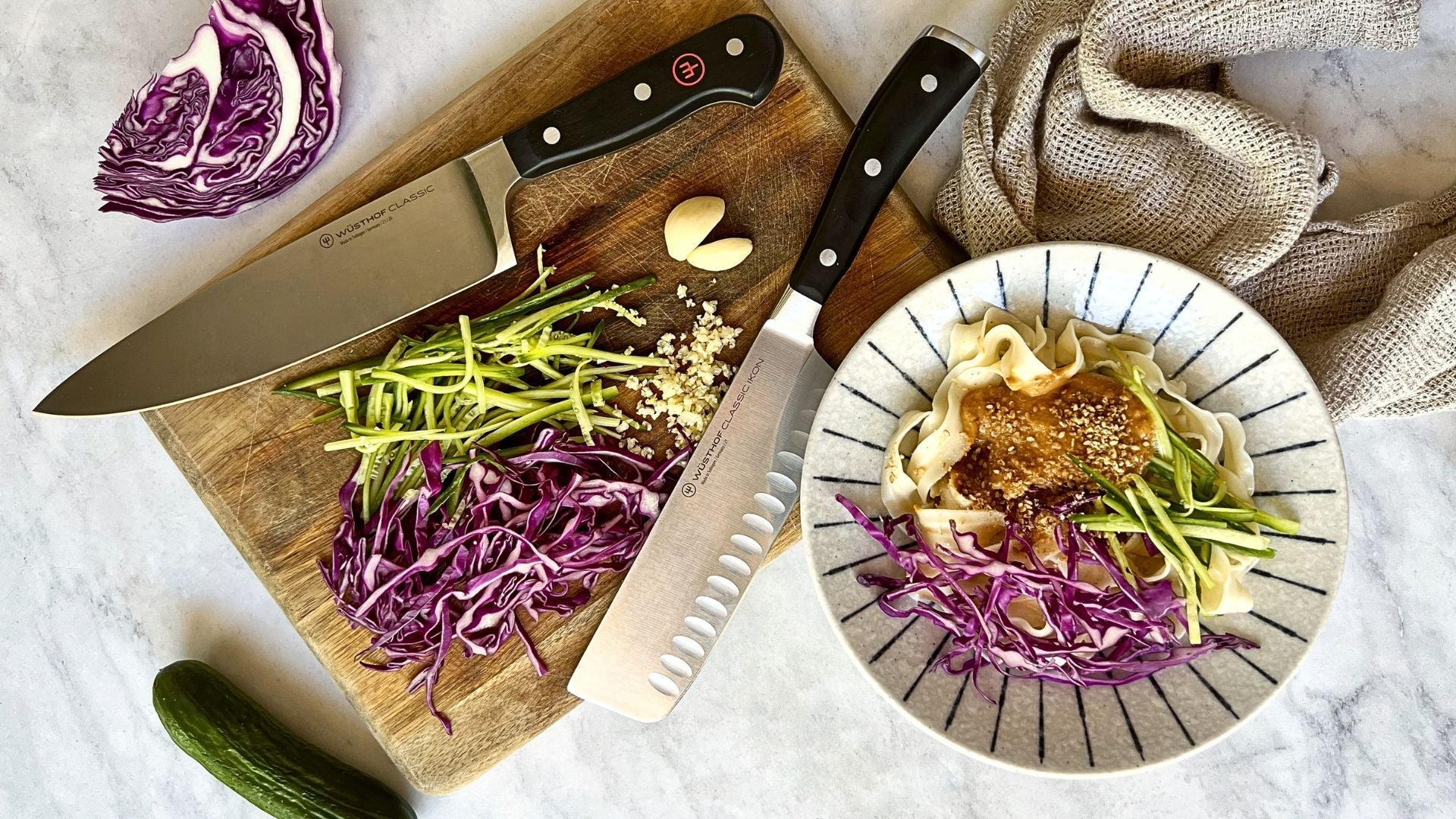

Classic Ikon 7" Hollow Edge Nakiri

Classic 8" Chef's Knife
Types of Asian-Style Knives
WÜSTHOF’s team of expert knife artisans in Solingen, Germany are continually inspired by the skill and innovation of regional Asian knife making. The WÜSTHOF Solingen factory crafts Asian-style knives that highlight the essential features of both traditional and modern techniques. And though several kinds of Asian-style knives exist globally, these are the top four Asian-style blades shapes loved by WÜSTHOF fans around the world.
Chinese-Style Chef’s Knife
The traditional Chinese chef’s knife has an all-purpose spirit with a cleaver’s build. While this chef’s knife may look like cleaver in shape, its purpose is very different. A cleaver is meant for tasks that need a greater cutting force, like breaking down bones for stock. Cleavers are meant to be swung and applied to an ingredient with greater force, so they have a heavier, thicker blade.
The Chinese chef's knife is meant for essential, everyday use. The wide, square blade is forged from a single piece of WÜSTHOF steel, which is slightly narrower than a typical butcher’s knife. The blade is similar in heft and shape to a bench scraper, and it can, in fact, be used as one. (This comes in handy for recipes that involve herb- and vegetable-heavy knifework. You can use the flat, wide blade to scrape and transfer finely chopped ingredients right into your skillet.)
Whether you're mincing garlic, coarsely chopping cilantro, or thinly slicing steak, a Chinese-style chef’s knife is ideal for virtually any kitchen task.

Broad Blade
Ideal for essential, everyday cutting tasks.
Thin, Sharp Edge
Perfect for mincing herbs and finely slicing meat or vegetables.
Chai Dao
The exceptionally versatile chai dao is a vegetable cleaver. This sturdy yet nimble knife is built for precise, produce-focused prep work — contrasting kitchen jobs that require the considerable force of a conventional meat cleaver, such as slicing coconuts or breaking down chicken bones. The chai dao is similar in shape to a typical cleaver, but with a thinner, smaller, and more lightweight blade that allows for greater control during chopping, mincing, slicing, and dicing. The chai dao’s maneuverability makes it a perfect all-purpose tool for julienning cucumbers, mincing fresh ginger, or carving thin, even slices from fish steaks or smaller cuts of meat.

Thin Blade
Designed for maneuverability and multipurpose use.
Curved Edge
Creates a rocking motion for chopping, slicing, or dicing.
Hollow-Edge
Small air pockets gently push food off the blade to reduce friction and drag.
Santoku
The most frequently used knife in Japanese home kitchens, the santoku is a lightweight, multipurpose chef’s knife with a straight or slightly curved cutting edge. It typically has a thinner, sharper blade than a Western-style chef’s knife, and occasionally features a dimpled or scalloped edge that prevents food from sticking to the blade during chopping. The etymology of the Japanese term means the “three virtues” or “three strengths,” which is said to refer to the multiple functions of the knife, from the many cutting styles it can be used for to the countless ingredients it can help prepare and plate.

Slightly Curved Edge
Allows for multipurpose prep work
Half-Bolster
Reduces the weight of the knife and allows the entire length of the blade to be sharpened.
Nakiri
The nakiri, another all-rounder in Japanese kitchens, is a vegetable knife with a straight edge and a blunt, symmetrical tip. The shape of the blade prevents it from rocking back and forth during slicing, as is typical of a Western-style chef's knife with a subtle curvature in the belly of the blade. This knife excels at cutting fruits, vegetables, and herbs of any kind, though it’s also handy for the delicate, precision-oriented job of thinly slicing fish and meat.

Blunt, Symmetrical Tip
Design imitates a Japanese-style cleaver
Straight Edge
Ideal for thinly slicing herbs, fruits, vegetables and meat.
If you tend to favor agile, lightweight handling; hard and extraordinarily sharp blades; and precision-oriented knife work, Asian-style knives are a great option for you to explore! And while traditional Japanese knives require expert-level knife maintenance and a source for sharpening single-bevel blades, WÜSTHOF’s premium Asian-style knives offer options that are more approachable — while preserving the exceptionally high quality and expert craftsmanship that these historic, Asian cutlery regions are known for.
Related Posts
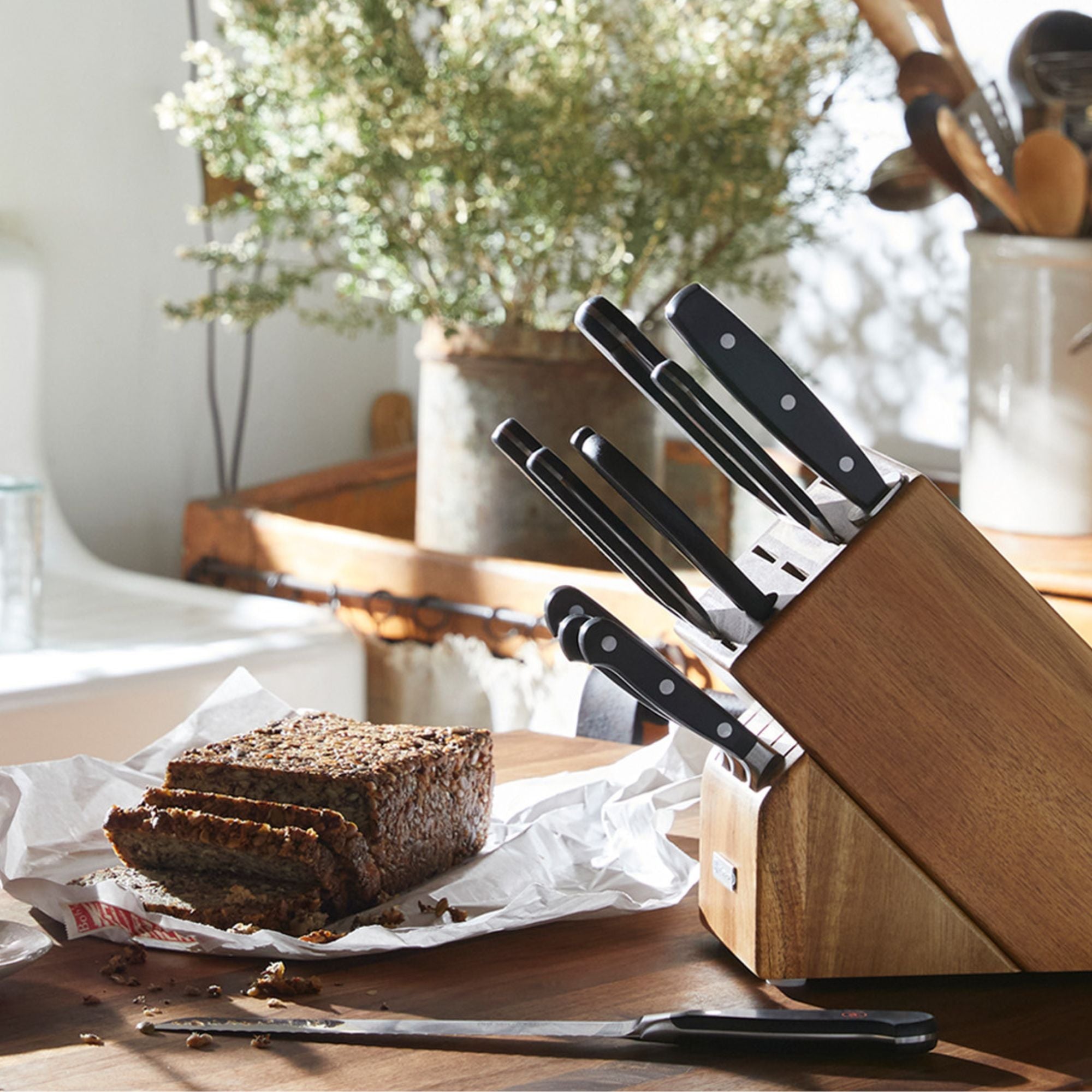
Knife Knowledge
The Top Three Knives Every Kitchen Needs
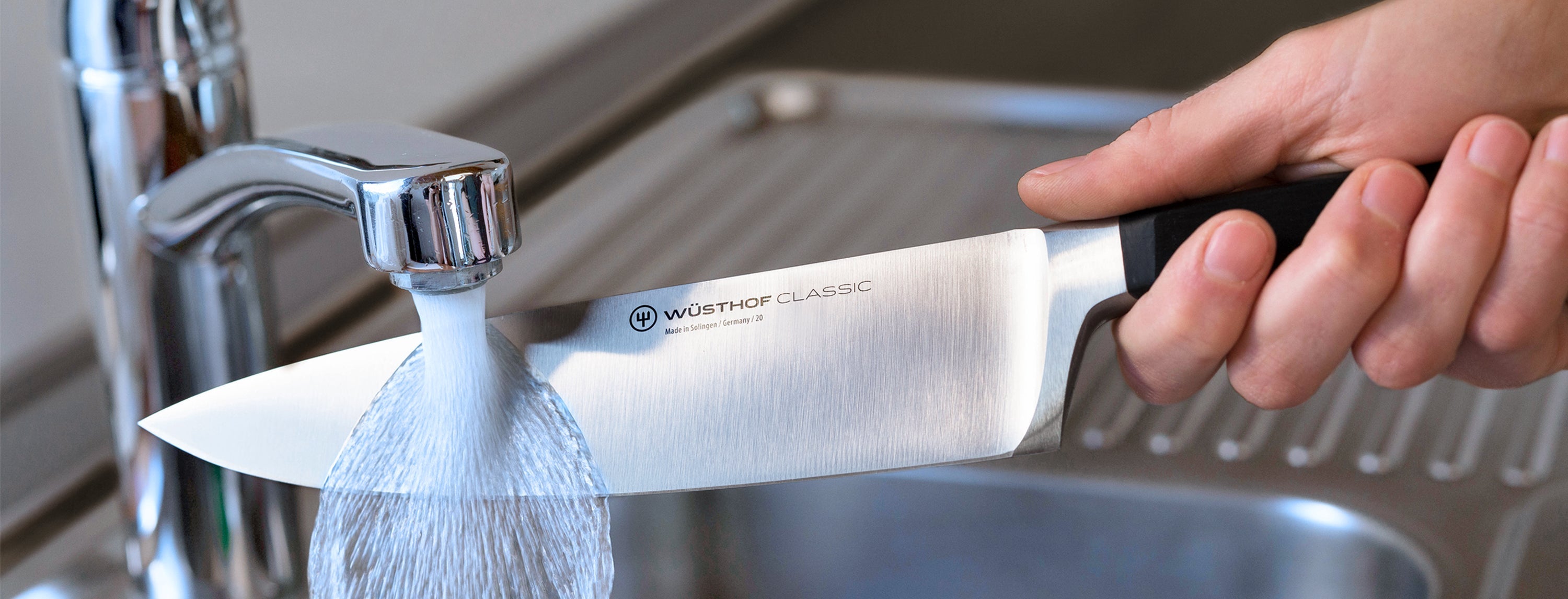
Knife Knowledge
How to Clean Your WÜSTHOF Knives
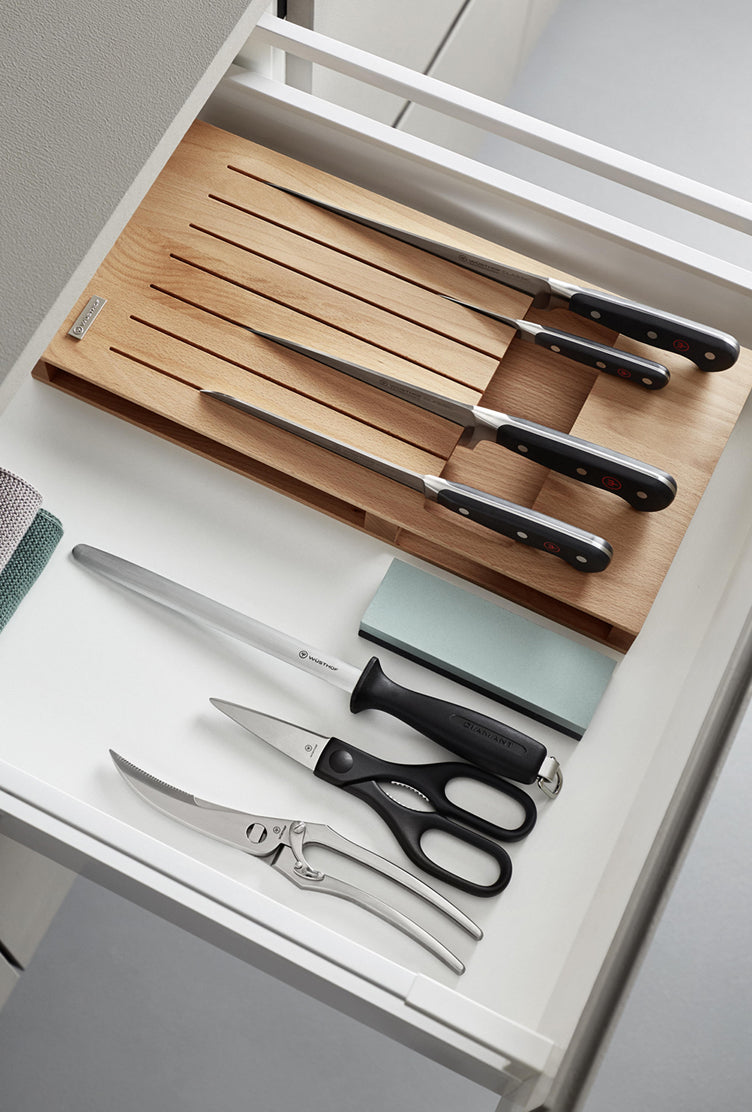
Knife Knowledge




